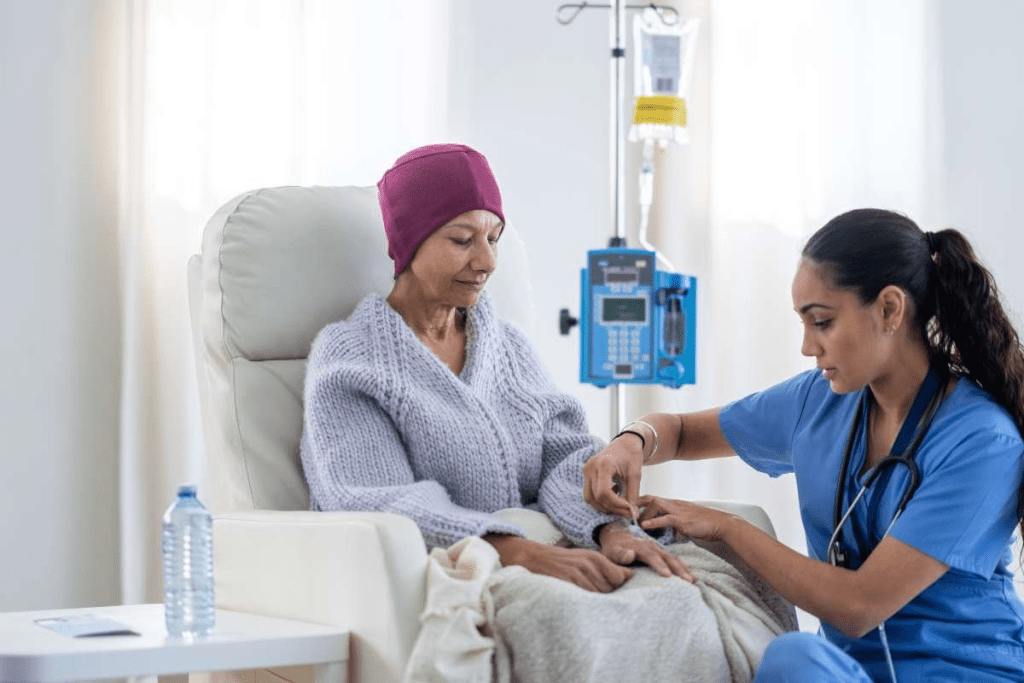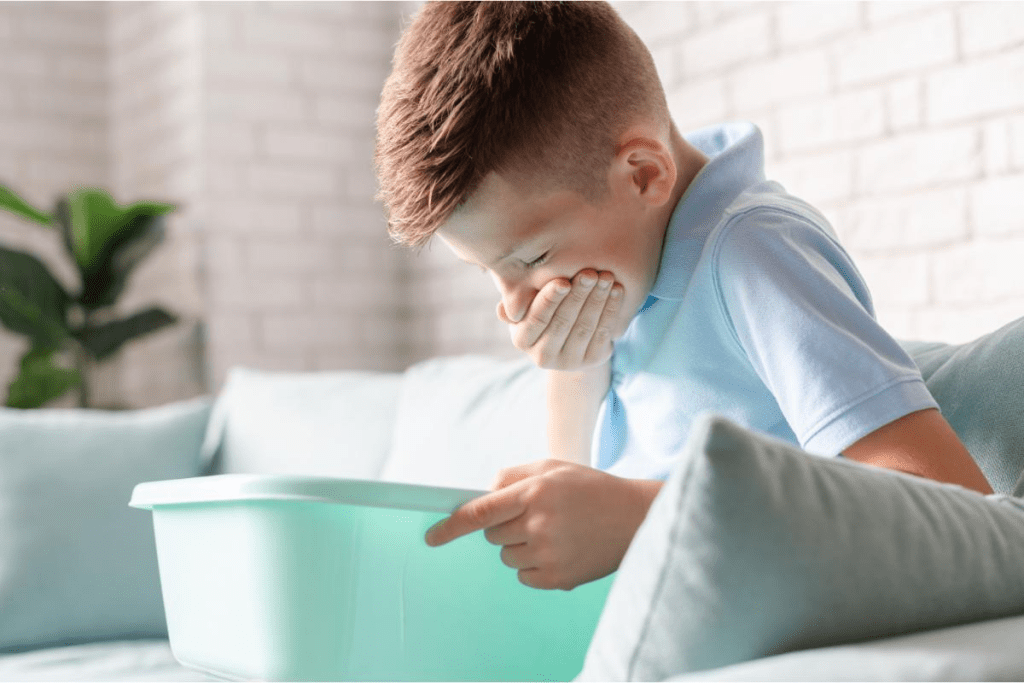Last Updated on November 13, 2025 by

Chemo therapy and radiation therapy are common cancer treatments. They can save lives but also have side effects. These effects can harm the body in many ways.
Going through chemotherapy or radiation can be tough. Knowing the side effects of chemotherapy and radiation side effects helps. This knowledge is key to making good health choices.
Healthcare providers are very important during treatment. They help patients deal with the challenges of these treatments. Knowing the common side effects helps us face these challenges better.
Cancer treatments like chemotherapy and radiation therapy often cause fatigue. This side effect affects a lot of patients. It can make daily life hard and lower quality of life.

Fatigue is more than just feeling tired. It’s a lasting lack of energy. It can stop patients from doing everyday things. It’s important to know why it happens and how to deal with it.
Cancer treatments harm both cancer cells and healthy cells. Radiation therapy can damage cells and cause inflammation. This can lead to fatigue. The amount of fatigue depends on the treatment, dose, and area treated.
Both chemotherapy and radiation can make patients very tired. But how long and how bad it is can vary. The National Cancer Institute has tips on fighting cancer-related fatigue.
There are many ways to fight fatigue. These include lifestyle changes, medical help, and support for the mind. Some good strategies are:
Knowing about the side effects of 5-day radiation helps prepare for fatigue. Understanding what does radiation do to the body helps manage side effects better.
By using these strategies, patients can handle fatigue better. This improves life during and after treatment.
Hair loss is a distressing side effect for up to 65% of patients on chemotherapy. This condition, also known as alopecia, can deeply affect a person’s self-esteem and body image.
Chemotherapy targets fast-growing cells, including hair follicles, causing hair loss. The amount of hair loss varies based on the chemotherapy drugs used. Some drugs, like doxorubicin and cyclophosphamide, are more likely to cause hair loss.
Radiation therapy can also lead to hair loss, mainly if the treated area has hair. The severity of hair loss from radiation depends on the dose and where it’s applied. Unlike chemotherapy, radiation usually causes hair loss in a smaller area.
Preparing for hair loss can make it easier to cope. It’s important to talk to your healthcare provider about your concerns before starting treatment. Knowing what to expect can help reduce anxiety and make the experience less stressful.
There are several ways to manage hair loss, including:
Remember, hair loss is often temporary, and hair usually grows back after treatment ends. But the emotional impact should not be ignored. Patients should seek support if they need it.

Up to 70% of cancer patients deal with nausea and vomiting from chemotherapy. These side effects can really hurt a patient’s life quality. They make it hard to eat, drink, and feel well.
Chemotherapy makes some people feel sick and throw up. This happens because of special chemicals in the brain. How bad it is can depend on the treatment and the person.
Understanding why it happens helps us find better ways to stop it. We know some treatments are worse than others. This helps us choose the right medicine.
New ways to fight nausea and vomiting have made a big difference. These methods use different medicines to target the problem in different ways.
By matching the right medicines to the treatment and patient, we can lessen nausea and vomiting. This makes patients feel better and live better lives.
Managing nausea and vomiting is key in cancer care. It helps patients handle treatment and stay healthy.
The skin is very sensitive, and radiation therapy often leads to big skin issues. Almost all patients get some kind of skin problem. These can be anything from a little irritation to serious reactions.
Radiation dermatitis is a common side effect of radiation therapy. It happens when the skin cells get damaged and the skin’s natural barrier is disrupted. The severity of radiation dermatitis can vary, and it is typically graded on a scale from 1 to 4, with grade 1 being mild and grade 4 being severe. Knowing how to manage this side effect is key.
The grading of radiation dermatitis is based on symptoms like redness, dry skin, and open sores. Early detection and proper management can lessen the severity of radiation dermatitis and make patients more comfortable.
Chemotherapy can also lead to skin problems like rashes, irritation, and nail changes. The specific dermatological effects of chemotherapy depend on the type of chemotherapy agents used and the individual patient’s response. We help patients manage these side effects to reduce their impact on daily life.
Common skin issues from chemotherapy include hand-foot syndrome, which causes redness and irritation on the palms and soles. Quick recognition and management of these side effects are vital to avoid long-term damage and ensure the best outcomes.
Patients sometimes worry about the signs chemo is killing you, but these usually point to severe side effects rather than the treatment itself. Cancer patients need to know the warning signs that their chemotherapy might be causing serious side effects. Chemotherapy is a strong weapon against cancer. But, it can also lead to serious problems that need quick action.
Myelosuppression happens when chemotherapy weakens the bone marrow’s ability to make blood cells. This can cause several issues, including:
It’s vital to recognize the signs of myelosuppression because it can cause serious infections or bleeding if not treated right away.
Some chemotherapy side effects need immediate medical help. These include:
If you have any of these symptoms, seek medical help right away.
Cancer treatments like chemotherapy and radiation can have big side effects. These can really affect how well patients feel during treatment. It’s key to manage these side effects to keep patients’ overall health good.
Side effects like tiredness, hair loss, nausea, and skin issues are common. Healthcare providers are very important in helping patients deal with these. They work hard to make sure treatment works well without hurting patients’ quality of life.
Knowing about the side effects of cancer treatments helps us improve patient care. By using proven strategies, we can make patients’ lives better during treatment. It’s all about finding a balance between treating the cancer and keeping patients’ quality of life high.
Common side effects include fatigue, hair loss, and nausea. You might also experience skin problems and myelosuppression. Knowing these side effects helps patients manage their treatment better.
Yes, radiation therapy can lead to hair loss. But it usually affects only the treated area. The extent of hair loss depends on the radiation dose and type.
To fight fatigue, rest, exercise, and eat well are key. Try to pace yourself, do gentle exercises like yoga, and eat a balanced diet. This can help reduce fatigue.
Chemotherapy can dry out your skin, make it sensitive, and cause rashes. It can also lead to radiation recall. This is when previously irradiated skin reacts to chemotherapy.
New antiemetic treatments are very effective against nausea and vomiting. They use a mix of medications, like 5-HT3 and NK1 receptor antagonists. These are chosen based on the patient’s needs.
Myelosuppression means your body makes fewer blood cells. This raises the risk of infections, anemia, and bleeding. To manage it, we check blood counts, use growth factors, and adjust treatment plans as needed.
Yes, both treatments can lead to long-term side effects. These include a higher risk of secondary cancers, heart disease, and brain problems. We closely monitor and manage these risks for our patients.
Both treatments can cause similar side effects, but in different ways. Chemotherapy often leads to hair loss and nausea. Radiation therapy tends to cause skin issues and fatigue, mainly in the treated area.
Bhatani, R., et al. (2024). The adverse impact of chemo-radiotherapy on the quality of life of head and neck cancer patients. Oral Oncology, 110, 105120. https://www.sciencedirect.com/science/article/pii/S277290602400390X
Subscribe to our e-newsletter to stay informed about the latest innovations in the world of health and exclusive offers!